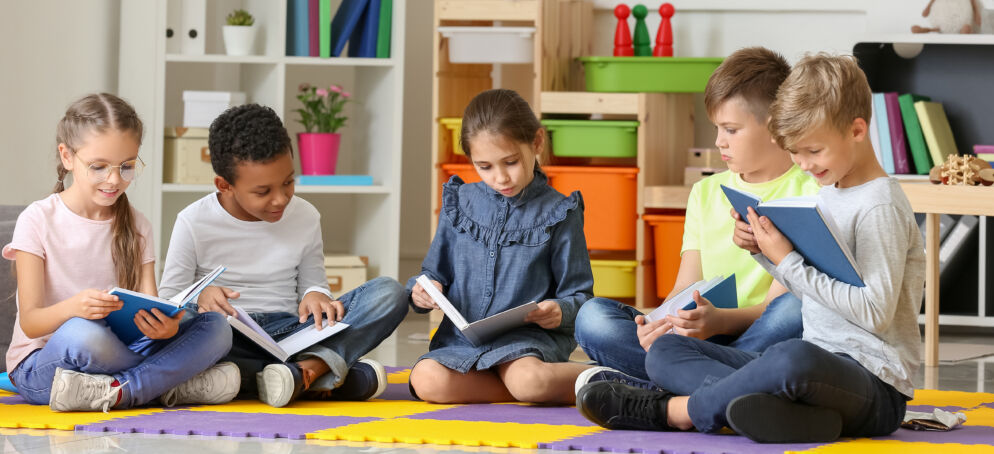
By Faygie Holt
What would it take to get kids to read more books? That’s a question that people have been asking for years, and one that has become even more pressing as the 2022 National Assessment of Educational Progress found that only 33% of fourth graders and 31% of eighth graders in the United States performed at or above the national standard for reading proficiency.
First Book, a nonprofit that has worked for some 30 years to address inequity in education, thinks it may have the solution: offer kids books with diverse characters and settings representing different cultures, backgrounds, faiths, ethnicities and socio-economic statuses.
“We have been working on elevating diverse content for decades, and in 2015, we ran a study and asked educators what they thought about diverse books; 90% of educators responded that they know their kids read books when the books are diverse and reflect their culture and lives,” says Kyle Zimmer, president, CEO and co-founder of First Book.
Though anecdotal discussions about the benefits of diverse books have been taking place in recent years, Zimmer says there was no comprehensive study about their impact in the classroom. So, First Book, which provides educational tools and books to more than 575,000 educators in low-income schools and programs across the U.S., set out to find the facts.
The nonprofit gave 450 teachers in low-income, Title 1-eligible schools $250 to spend on diverse books for their classroom libraries. Teachers purchased books through the First Book Marketplace, which works with publishers to make books available at significant discounts from retail prices. Staff from First Book then followed the reading progress of the students for the next six months, over the course of the 2022-2023 school year.
The results, Zimmer says, were “compelling.”
“The collective time that kids spent reading rose by four hours on average,” she says. “In addition, it also delivered reading scores that were 3% higher than the national annual average,” with the most gains being “made by the students with the lowest reading scores entering the assessment phase.”
Classrooms that added bilingual books and stories that represented the LGBTQ+ community showed the greatest gains. As the First Book study found, for every one bilingual book added to a classroom library, reading assessment scores rose by 7% on average, while for every LGBTQ+ book, they rose 4.5% on average.
There is no one cause of the national downturn in reading levels, and educators point to several contributing factors, such as the global pandemic that led to shuttered schools in many places, particularly those in big cities and in low-income areas; the continuing rise in usage of electronic devices and, most recently, moves to ban books in some school districts across the country.
All of these factors, Zimmer says, have led to a “crisis in reading acquisition” that has an impact not just on low-income kids but all kids across the board, as 68% of fourth graders are not reading proficiently. Those numbers are even more striking when you look at children of color, she continues, noting that more than 80% of those students aren’t reading on grade level.
“That is a catastrophic set of data because it means that those individuals, those kids, will struggle mightily as they get older to get jobs and engage in democracy,” she says, adding, “as a nation, we need to think about what happens in a country … when you have 68% of people not reading proficiently.”
Giving students books that mirror their communities and experiences can help remedy that, say educators, adding that the books can also illuminate the experiences of kids whose lives are different from their own.
According to the Cooperative Children’s Book Center, a research library at the University of Wisconsin–Madison, of 3,450 published books the center reviewed in 2022, 1,364 were either written or illustrated by a person who identifies as BIPOC, Black, Indigenous or a person of color.
By contrast, when the center first started tracking books by minority authors in 1985, researchers found that of the 2,500 books they reviewed, only 18 were written or illustrated by African Americans.
Additionally, of the books reviewed in 2022, 46% had “significant” BIPOC content, and 39% had at least one BIPOC main character. There were also more books that included multiracial characters or those who “portray other aspects of identity, interest and experience beyond race and ethnicity.”
In a release, the center’s director, Tessa Michaelson Schmidt, explains this diversity in the children’s book publishing world means librarians, teachers and other adults who work with kids “can find outstanding books to recommend to young readers and listeners that reflect dimensions of their lives and give a broader understanding of who we are as a nation.”
Adds Zimmer, “Every kid needs to see their own culture and other people’s culture in the books they are reading.”







